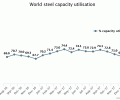EMCE 2019: ELV recyclers chase new green thinking
EMCE 2019: ELV recyclers chase new green thinking
<![CDATA[
In Japan, host nation to the 2019 E-Mobility & Circular Economy (EMCE 2019) conference, some 99 percent of internal combustion engine (ICE) end-of-life vehicles (ELVs) are recycled, and a high percentage of the materials in those ELVs are recycled. Now, with new energy vehicles (NEVs) gaining market share, the recycling industry must devise new methods if cars designed to be “green” will stay that way through the ELV stage.
At the July Tokyo event, organized by Switzerland-based ICM AG, several presenters pointed to the success of the current ICE automotive recycling sector and the challenges created by newly configured battery packs found in NEVs.
Professor Eiji Hosoda of Chubu University in Japan said the 2 million pure electric vehicles (EVs)—part of the NEV mix, currently in use comprise less than 0.3 percent of all vehicles on the road globally. Through a mix of manufacturer support and buyer subsidies, China could be leading the world into a different future. In that nation in 2018, the sale of ICE vehicles dropped by 13 percent but the sale of NEVs rose by a staggering 118 percent.
“The trend is encouraging” for NEVs, said Hosoda, adding that even without incentives, many buyers “will pay for a new style of life.”
More NEVs are pouring onto roads in China in part because such vehicles are being made affordable there, according to Willy Tomboy, the EMCE 2019 conference director. Government support and competition between some 140 NEV makers has caused 91 percent of NEVs sold in China to have been purchased for less than $45,000 there. That compares with 54 percent in that price range in Europe and just 38 percent in the United States.
In many developed nations, including Japan, Hosoda said a broader NEV infrastructure still needs to be built, encompassing both charging stations and the software needed to help run an NEV-dominant traffic system.
The other challenge—which also contains opportunities—will be Japan’s ability to match its 99 percent recycling rate for ICE vehicles in the NEV market. The battery packs of such vehicles “must be recycled,” stated Hosoda, because “e-mobility must be compatible with the circular economy.”
Takashi Shimamura of the Japan Automobile Manufacturers Association (JAMA) said the growth of NEVs has spurred concurrent growth in battery research and development. This has boosted innovation, but also can cause difficulties for ELV recyclers contending with many different configurations of batteries.
Lithium ion batteries (LIBs) are currently a dominant configuration, and Shimamura says these must “be handled with care” because of their high voltage and volatile nature. JAMA says the Japan Automobile Recycling Partnership (JARP) helps pay for the collection and transport of LIBs, to help act as “a safety net for ensuring the proper recycling” of NEV batteries.
According to Shimamura, there are seven smelting facilities in Japan that can handle the different ELV batteries collected through the JARP program. He also said some LIB units can be refurbished or re-fabricated.
EMCE 2019, which featured plant tours, workshops, conference sessions and an exhibit hall, was July 1-3 at the Westin Tokyo.
]]>
Source: Recycling Today
EMCE 2019: ELV recyclers chase new green thinking
<
